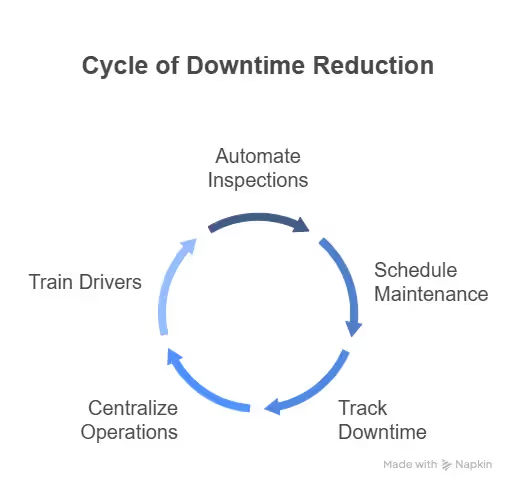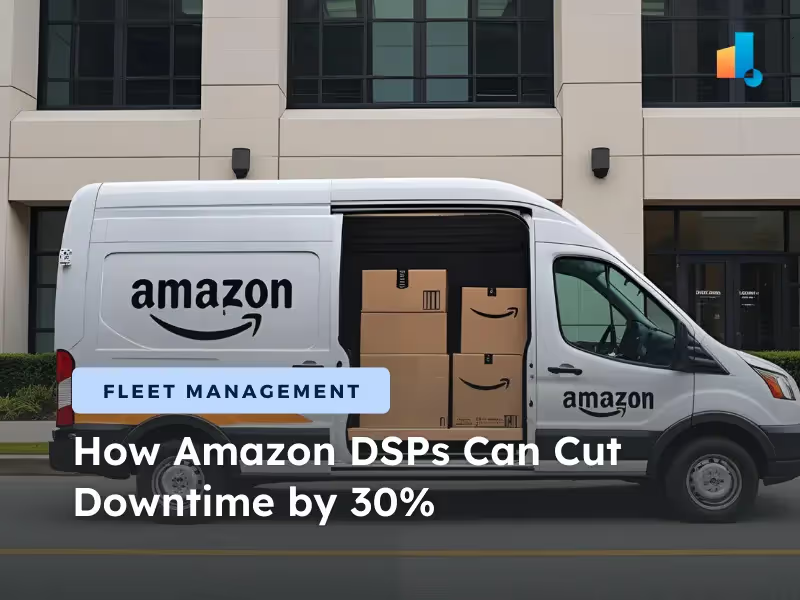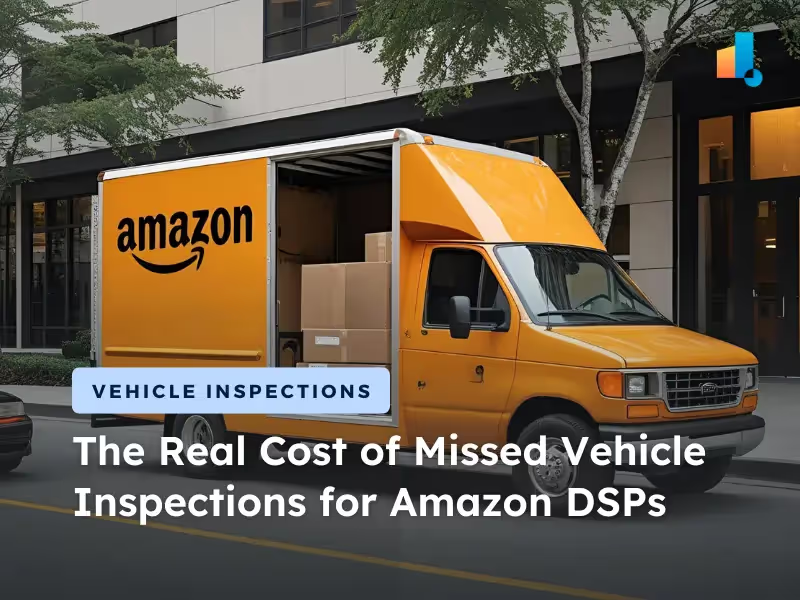Key Takeaways
Cut Downtime by 30% – No Extra Hires Needed - Amazon DSPs are saving time and money by using smart tools, not more people.
Go Digital with Inspections - Catch small issues early with pre- and post-trip checks on drivers' phones.
Stay Ahead with Preventive Maintenance - Schedule oil changes, brake checks, and more—before things break down.
Track Problems, Fix Faster - Log every downtime event to find and stop repeat issues.
Train Drivers to Spot Red Flags - Teach drivers to notice early warning signs to avoid breakdowns.
Use Fleet Management Software - Simplify everything—inspections, service, and alerts—in one easy tool like Simply Fleet.
Running an Amazon Delivery Service Partner (DSP) business isn’t easy. Between meeting delivery quotas, managing drivers, handling van repairs, and ensuring safety, it’s a full-time job—and then some. The last thing you want is unexpected vehicle downtime. Every hour a van is off the road is money lost.
But what if we told you there’s a way to reduce downtime by up to 30% without hiring a single extra person?
The secret? Smarter fleet management.
Let’s break down how Amazon DSPs across the country are using technology and process tweaks to keep their vans on the road and keep their businesses running smoothly.
Why Downtime Hurts More Than You Think
For Amazon DSPs, vehicle downtime doesn’t just slow things down. It hits your bottom line in five major ways:
- Missed routes and rescheduling hassles
- Temporary van rentals or backups (if available!)
- Frustrated drivers who have to wait or swap vehicles
- Poor customer delivery experience
- Risk to your DSP performance scorecard
Amazon’s DSP performance scorecard is closely watched. If your operation falls below certain standards, like on-time delivery rate or availability, you risk penalties, fewer future routes, or even losing your contract.
The good news? You don’t need more people. You need a better system.
The Smart Way to Cut Downtime: 5 Tactics That Actually Work

Let’s dive into five proven tactics that DSP owners are using to slash vehicle downtime, without expanding their team.
Automate Pre- and Post-Trip Vehicle Inspections
Many DSPs still rely on paper-based checklists or driver memory. But with dozens of vans and shifts, things fall through the cracks.
That’s where digital inspection tools come in. Solutions like Simply Fleet let your drivers complete quick pre-trip and post-trip inspections from their phones. They can:
- Log issues (e.g. tire wear, brake noise, broken mirrors)
- Upload photos instantly
- Submit reports directly to the fleet manager
Why it works: Small issues like worn brake pads or slow tire leaks are caught before they become breakdowns. Your team can schedule maintenance early and avoid last-minute van losses.
Real-world result: DSPs using digital inspection logs report up to 40% fewer surprise breakdowns within three months of adoption.
Implement Preventative Maintenance Scheduling
Instead of waiting for problems to arise, set up a recurring preventive maintenance schedule for every van. That means:
- Oil changes every X miles
- Tire rotation every Y weeks
- Brake checkups every Z deliveries
Use fleet software to track odometer readings and automatically schedule service reminders. This takes the guesswork out and ensures every van gets the care it needs.
Bonus tip: Coordinate service during off-peak times or split maintenance across shifts to avoid disrupting deliveries.
Track and Analyze Downtime Events
It’s hard to fix what you don’t track. Start logging every downtime incident:
- What was the cause? (Flat tire, dead battery, etc.)
- When did it happen?
- How long was the vehicle out of service?
- Was it preventable?
Use Fleet Management Software to Centralize Operations
If your current system involves paper logs, spreadsheets, group chats, and sticky notes… it’s time to upgrade to a good fleet management software.
With a centralized platform you can:
- View vehicle health status at a glance
- Assign service tasks and monitor progress
- Store all service history in one place
- Set automated alerts (for inspections, renewals, oil changes, etc.)
- Keep digital records for compliance and Amazon audit needs
Instead of hiring an extra fleet manager, let your software handle the admin load. That means less stress and more uptime.
Train Drivers to Spot Issues Early
Your drivers are your first line of defense. But many aren’t trained to notice early warning signs like:
- Slight steering wheel vibration
- Soft brakes
- Unusual engine sounds
- Warning lights that are ignored
Set up a quick monthly driver training (even 15 minutes) to go over:
- Common red flags to report
- How to fill out digital inspection reports
- What to do in case of mid-route issues
When drivers feel confident reporting early, it saves your entire team time and hassle.
Download our free Work Order Template
What This Looks Like in Practice
Let’s say you run a DSP with 35 delivery vans. Currently, you lose 2 vans per week to unexpected issues. That’s around 8 vans per month or 23% of your fleet sidelined regularly.
By implementing the above strategies, here’s what you could realistically achieve:
Within 2–3 months, your downtime could fall from 8 vans/month to 5 or even 4. That’s a 30–40% reduction, without adding new hires or increasing your payroll burden.
Why It Matters More Than Ever
Amazon’s delivery standards are only getting tighter. As volumes rise and customer expectations increase, DSPs must run lean, efficient, and reliable operations.
Vehicle downtime is one of the most preventable pain points in a DSP business. But only if you’re intentional about fixing it.
Investing a little time into tech and process upgrades now can save you thousands in missed routes, repairs, and penalties later.
Uptime Is Profitable
Cutting downtime by 30% isn’t about luck. It’s about smart systems, consistent processes, and using the right tools. Simply Fleet was designed to help Amazon DSPs do just that. If you’re ready to move from chaos to control, we’re here to help.
Ready to reduce your downtime and improve your scorecard? Try Simply Fleet. Start saving time, boosting performance, and keeping your vans on the road where they belong.



.png)








.png)


.png)
.webp)






